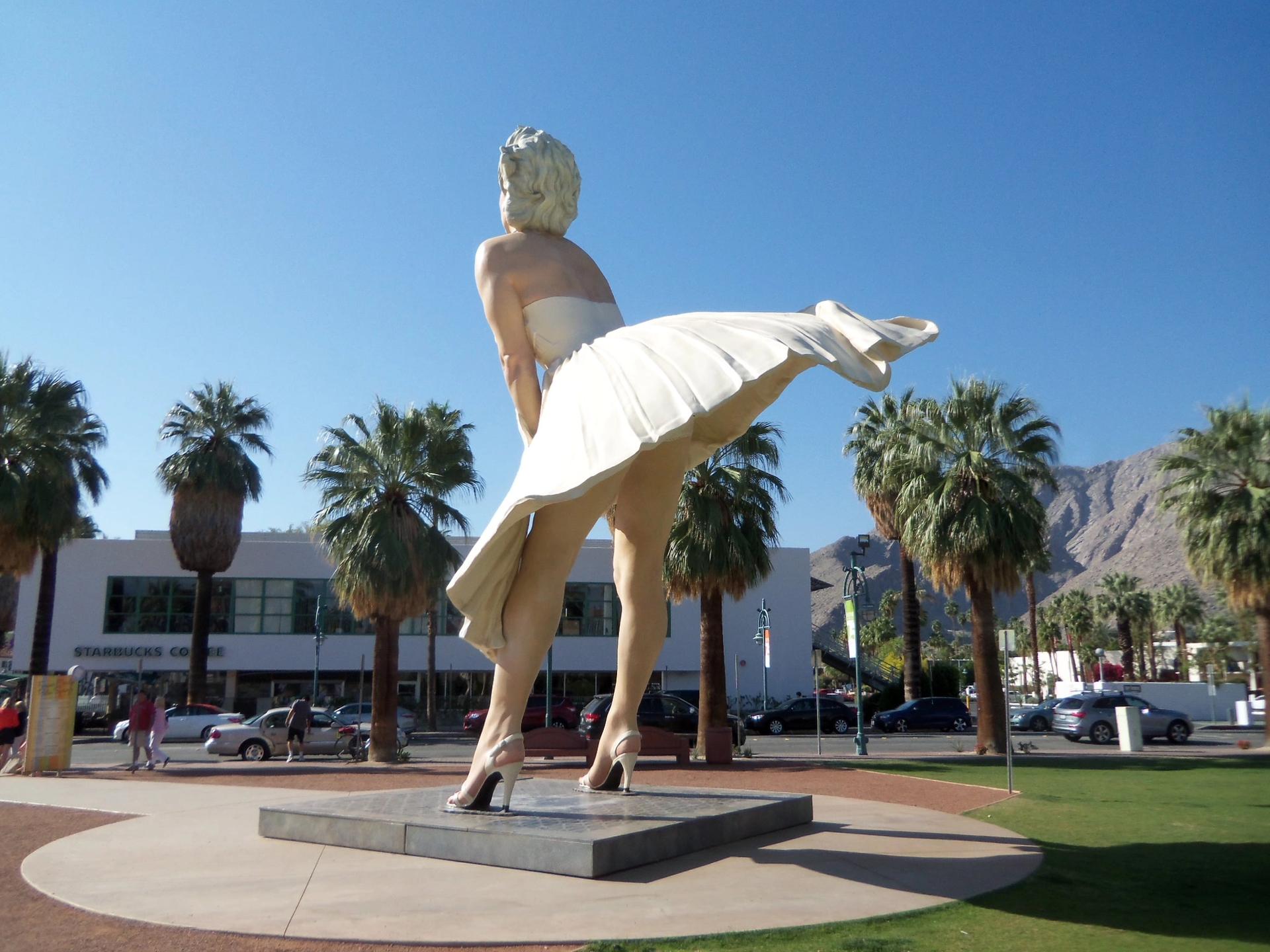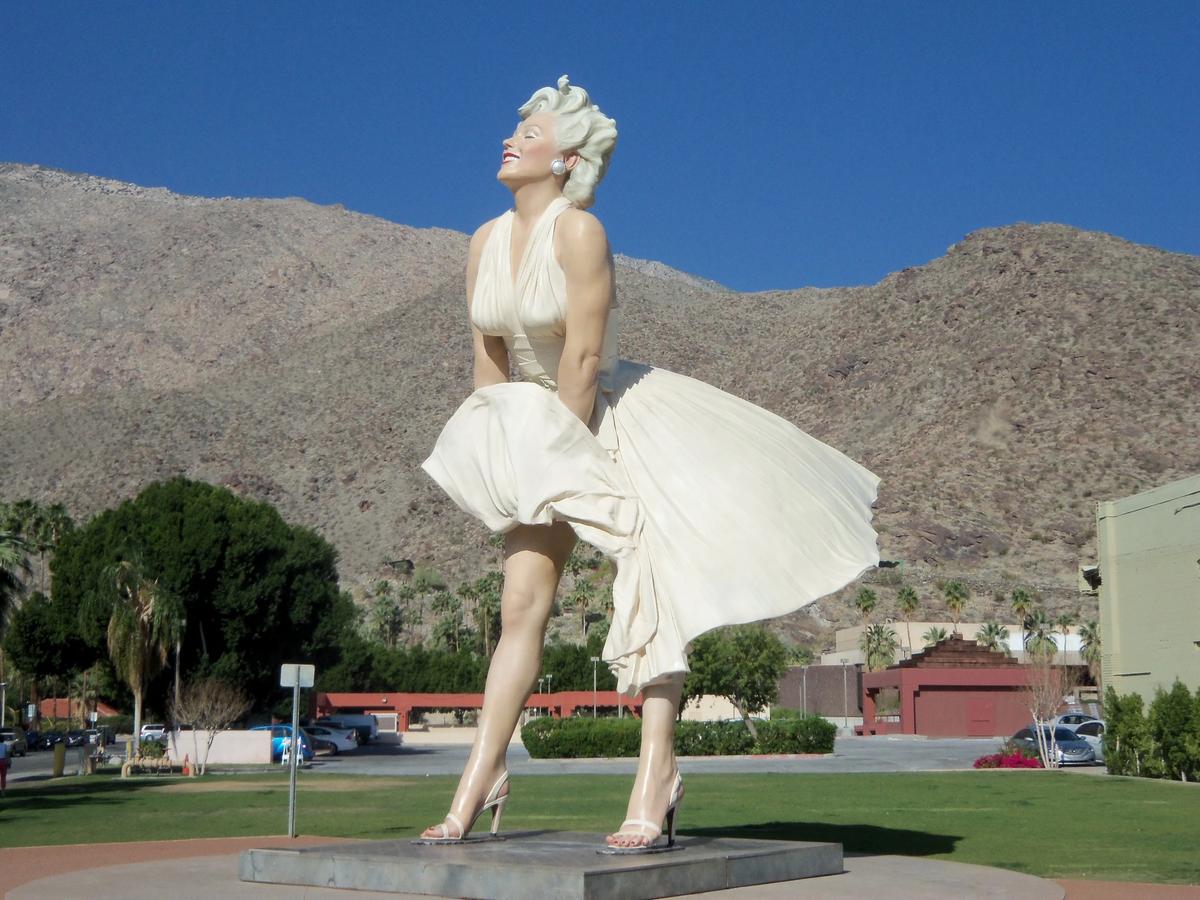A controversial 26-foot-tall Marilyn Monroe sculpture that once graced downtown Palm Springs, California is due to return, to a new location in front of the Palm Springs Art Museum. The kitsch work by the artist Seward Johnson, which has popped up in other cities across the US over the years, depicts the famous moment from Billy Wilder’s film “The Seven Year Itch” when Monroe’s white skirt gets blown up by gusts from a sidewalk grate. When it was first shown in the California desert town, from 2012 to 2014, Forever Marilyn was a popular tourist attraction, with many visitors posing for photographs between the statue's feet. But its return is seen as an embarrassment to the feminist movement and the local art community, and the art museum’s director has spoken out against it.
Last week, the Palm Springs City Council held a meeting to discuss a proposal by P.S. Resorts, a consortium of local hotels, to bring the landmark back and place it across the entrance from the Palm Springs Art Museum. Some thought it would help promote awareness of the oft-overlooked instutition, but the museum’s executive director Louis Grachos disagreed, and tried to dissuade the council from approving the installation. “You come out of the museum and the first thing you're going to see is a 26-foot-tall Marilyn Monroe with her entire backside and underwear exposed," Grachos pointed out. "We serve over 100,000 school-age children that come to our museum every single year. What message does that send to our young people, our visitors and community to present a statue that objectifies women, is sexually charged and disrespectful?"

“You come out of the museum and the first thing you're going to see is a 26-foot-tall Marilyn Monroe with her entire backside and underwear exposed," Louis Grachos, the director of the Palm Springs Art Museum, pointed out Photo: Fred Miller
The council passed the measure anyway, stirring up protests from artists, designers, and former museum directors and curators who published a joint letter in the local paper The Desert Sun on 19 November, calling the statue "blatantly sexist". The work’s proposed installation site would also block access to the institution on Museum Way, which connects to the busy artery of Palm Canyon Drive. One signatory of the letter, the artist Phillip K. Smith III, asks: “If the sculpture has to come back, can we find a more sensitive location for it?”


